53. BALD CYPRESS
Taxodium distichum

Bald Cypress is a tree commonly associated with the southern coastal plains and swamps, but it does tolerate cold and is found in CT. This tree is an evergreen, but has no needles in winter. Bald Cypress is a member of a very small group of conifers called "deciduous conifers". They have needles, reproduce with cones, and act just like other conifers, but they shed all their needles every year. There are two other deciduous conifers in the Arboretum: Dawn Redwood and European Larch.
BALD CYPRESS KNEES

You may notice these small, stump-like projections at the base of the Bald Cypress. Commonly called "knees", scientifically "pneumatophores". Some surmise they aid roots in breathing when the base of the tree is underwater. The tree is located right nest to Westmoor's vernal pool (it floods each Spring) and this is a great habitat for a species like Taxodium distichum.
MALE CATKINS
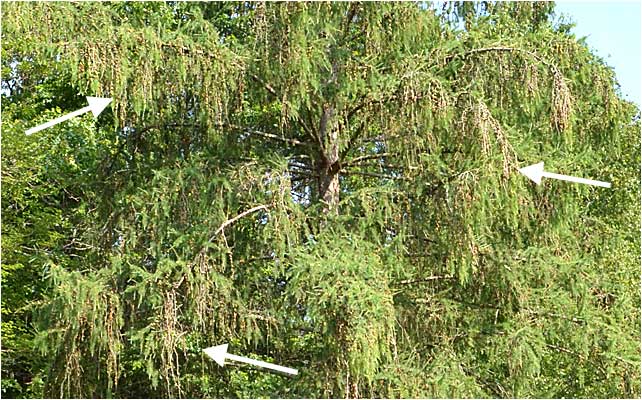
Bald Cypresses begin to set their male and female cones in the winter. Here, in late Spring, the male catkins are depleted of pollen but still clustered on the tree. They will soon fall.
FEMALE CONES

Similarly, the female cones also begin in Winter and are pollinated in early Spring. When pollinated, they are usually too small to be easily seen, but by mid-Summer (above) you can see them at about golf-ball size.
SPRING REVIVAL
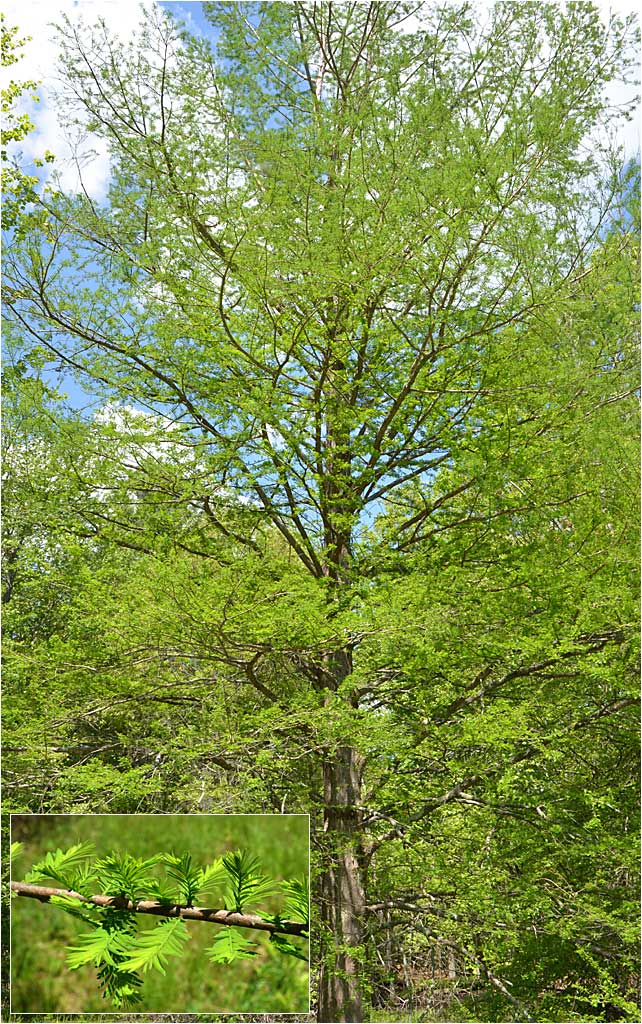
From the bare tree we saw in Winter, the Bald Cypress grows an entire new set of foliage every Spring. The needles are arranged alternately on Bald Cypress; the nearly identical leaf structure on Dawn Redwood is arranged oppositely.
SUMMER
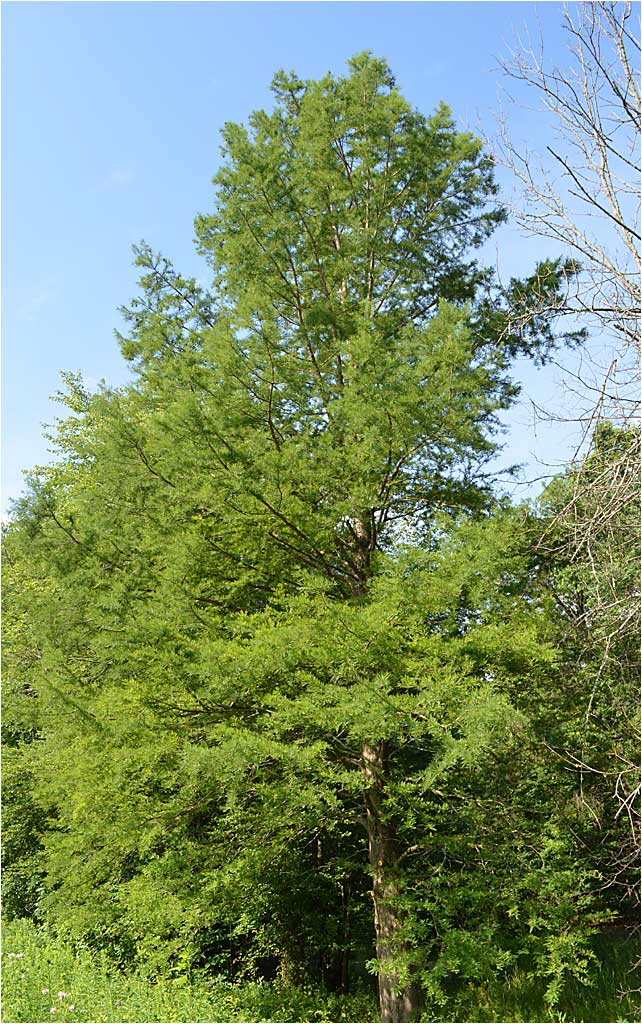
By mid-Summer, all of the new growth has matured, the male catkins are gone, and the female cones are growing on the tree. In just a couple of months, however, another transition will occur, and it is a dramatic one.
FALL FOLIAGE

Usually in mid-October the Bald Cypress turns this vivid shade of orange/rust and prepares to drop its needles for the Winter.
FALL (2)
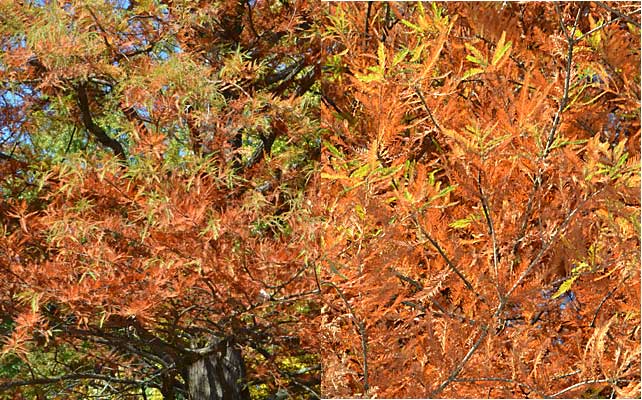
The Fall color is dramatic and intense - particularly since it's an evergreen that is providing the show. This picture taken October 20, 2022.
BARK, HABIT
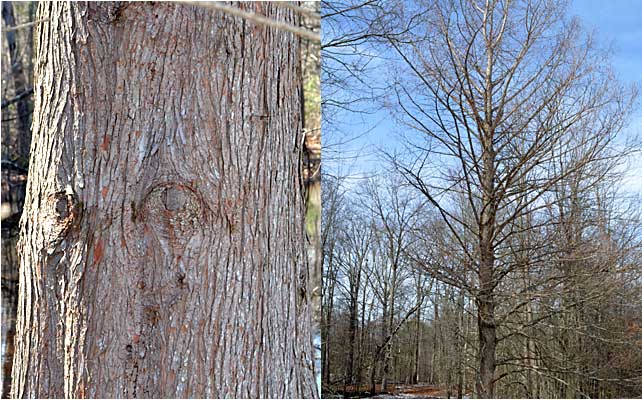
Bald Cypress bark is grayish-red with occasional peeling strips. The habit (branching) of the Bald Cypress is not as symmetrically whorled as some conifers (Northern White Pine, for example). The Bald Cypress was planted at Westmoor by then Park Naturalist Joe Pratt, circa 1980.